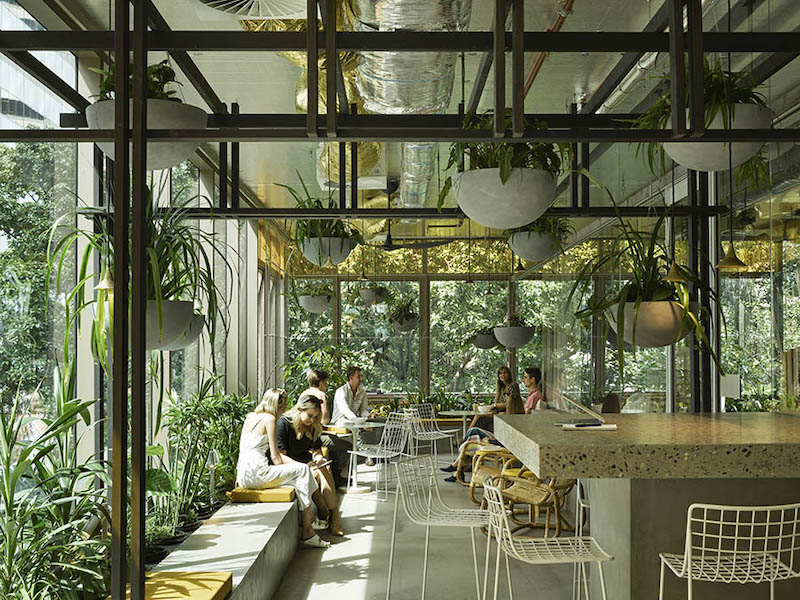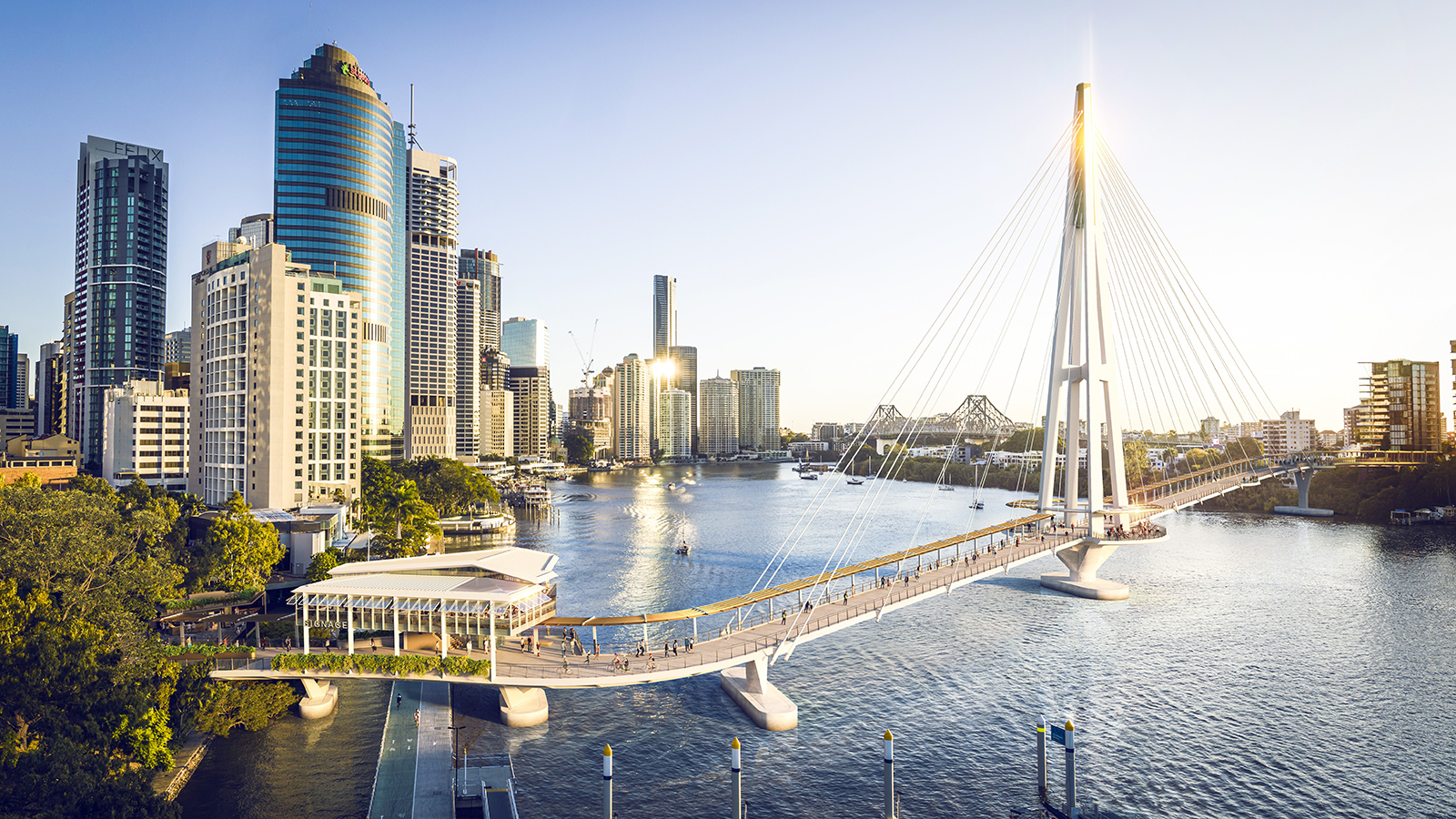In honour of Earth Day today (22 April), we’re taking a look at some of the green initiatives that encourage transformational change and offer innovative solutions to our environmental crisis. Within the Brisbane built environment, there are several sustainability approaches at play in various projects across the city, including Buildings That Breathe, Active Transport and – in the first of a recurring series focused on the built environment in Brisbane – Adaptive Reuse.
Buildings that Breathe
Buildings that Breathe is a unique approach to creating spaces in Brisbane which respond to our subtropical urban environment. By building walls and windows opening up to natural light and air, capturing ambient daylight and cooling breezes and thereby reducing our energy needs, these buildings benefit from a dramatic lowering in emissions, whilst being a greener place to inhabit. Shaded outdoor spaces with panoramic views create places to meet and relax., generous planting grows on our streets, rooftops and walls, embedding green into the city and enriching urban biodiversity.

Window seats around the periphery of the BVN Brisbane Studio in The Annex. Photo by Christopher Frederick Jones.
Brisbane Open House Practice Partners BVN opened The Annex studios and building in 2022. Situated near the edge of the Brisbane River, BVN envisaged a building and plaza that would spatially knit with the adjacent grove of fig trees. In 1889 Queen Victoria gifted a parcel of land at the intersection of Creek, Eagle and Elizabeth Streets, to the people of Brisbane. Walter Hill, the first superintendent of Brisbane’s Botanical Gardens, planted three fig trees here to provide a shady area for workers to rest amid the hectic activity of the wharf trading area.
With the gif grove inspiring the buildings unique shape, back-lit laser-cut panels additionally glitter over the building’s spaces, evoking the sensation of dappled sunlight and allowing inhabitants at every level, to feel in dialogue with these trees. Awning windows that open and shut, give tenants the option to access fresh air – literally allowing the building to breathe – and a connection with the outdoors, alongside a six level ‘canopy facade’ is designed to breathe, and to capture a sense of the iconic Queensland verandah, promoting a genuine connection with the outdoors.
Read more about BVN’s The Annex here.
Active Transport
 Kangaroo Point Green Bridge. Artist impression, courtesy Brisbane City Council.
Kangaroo Point Green Bridge. Artist impression, courtesy Brisbane City Council.
Human-powered mobility, such as biking or walking, is one of the most meaningful, and achievable ways to reduce carbon emissions, by conserving fuel and improving individual and public health. The greatest cities in the world are often referred to as ‘walkable’ and Brisbane is one of these places.
Brisbane City Council’s initiative to build new green bridges across Brisbane is helping to contribute to making active transport around the city more achievable by providing links to the city via foot, by bike and scooter and with greater connections to public transport.
The Kangaroo Point Green Bridge links the inner-city suburb of Kangaroo Point to the CBD and is one of five bridges across the city encouraging active transport and ease of connection. Opening later in 2024, be sure to use the bridge to connect from the CBD to New Farm this year where a lot of Brisbane Open House activities will be focused.
Adaptive Reuse
 Saratoga Woolstores, Teneriffe. Image courtesy Domain.com
Saratoga Woolstores, Teneriffe. Image courtesy Domain.com
Adaptive reuse refers to the process of reusing an existing building for a purpose different to what it was originally built or designed for. Also known as recycling or conversion, adaptive reuse is an effective strategy for optimising existing assets in a sustainable and circular fashion. Across Brisbane, there are many great examples of urban renewal through the practice of adaptive reuse and one particularly impressive example is adaptive reuse through the Brisbane suburbs of New Farm, Teneriffe and Newstead.
These suburbs, fronting the Brisbane River north-east of the CBD, played significant roles in the industrial life of Brisbane from the mid-nineteenth century onwards, with much of the activity clustered around the river, an important transport corridor. Concentrated industrial development of the river’s edge began in the late nineteenth century and included Brisbane Gas Company’s gasworks (opened 1887), the Colonial Sugar Refinery (built in 1893), followed by timber yards, coal yards and wool stores. The New Farm Power House was built between 1928 and 1940 and workers’ housing developed within walking distance of the industrial facilities, or facilitied by a train journey to the area.
By 1990 however, when the railway closed, most of the industrial sites and riverfront were neglected. The dilapidated areas were seen as an opportunity to create sustainable live-work communities in the inner city, delivering affordable housing and urban amenities in the vacant warehouses and other industrial buildings that were transformed. These suburbs have been undergoing continual urban regeneration since 1991 when approximately 730 hectares of former industrial land has undergone urban renewal through adaptive reuse.

Brisbane Powerhouse. Top image courtesy New Farm and Districts Historical Society. Bottom image courtesy
The Newstead and Teneriffe Master Plan was the first plan completed by the Urban Renewal Brisbane, with the 1995 conversion of a Teneriffe wool store into apartments. By 2000 most of the waterfront woolstores had been converted to residential use and this was followed by the redevelopment of the Brisbane Powerhouse into a performing arts centre in 2000 by City Design, Brisbane City Council, in association with Cox Rayner and Allom Lovell.

Dakota Woolstore ca. 1930 and today. Images courtesy Simon Spiel.
The overall urban impact is significant and has retained some of the industrial character of these suburbs as the uses and contexts have changed. The urban work is widely recognised and will be a special focus of the Brisbane Open House programming this year.
To read more about Earth Day, please see here.
